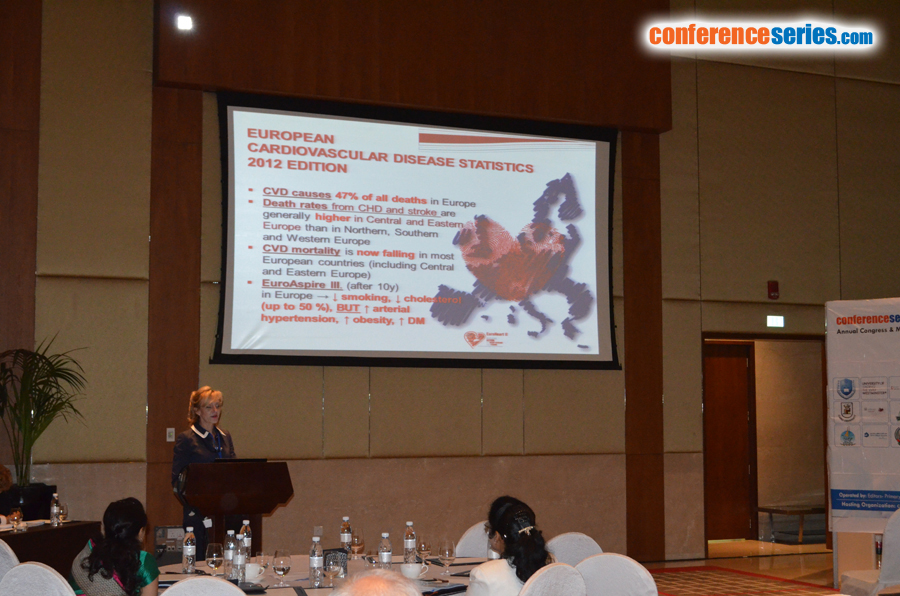
Biography
Biography: Schusterova I
Abstract
Obesity causes chronic volume overload (increased preload) and dilation of the left ventricle (LV) of the heart. Hypertrophy LV itself as an adaptation to expanded intravascular volume determines the damage of the diastolic function LV especially by influencing later diastolic passive infilling. For persistent obesity they may of course result in systolic dysfunction and manifest heart failure while damaging the function of the myocardium correlates with body mass index and the duration of obesity. The clinical picture of the consequences of cardiomyopathy depends on the severity of the emerging cardiac changes, age, duration and severity of the obesity, as well as on associated diseases, which often accompany obesity (arterial hypertension, disorder in the metabolism of lipids and glucose, ischemic heart disease, sleep apnea syndrome, etc.). Studies of obese child patients indicate, initial signs of cardiomyopathy – changes of indices of diastolic and systolic functions, though they are clinically silent. Early structural and functional changes in the myocardium of obese children and overweight children represent a higher risk of clinical manifestation of this cardiomyopathy in early adulthood, and therefore they require increased vigilance of the pediatricians and pediatric cardiologists. In one of our study, we confirmed differences not only in LVM (p<0.001) and LVM index body height2.7 (p<0.05) but as well as the differences in left ventricle size (IVS (p<0.01), LVEDD (p<0.005), LVESD (p<0.05), PWTh (p<0.001)) and volumes include stroke volume (p<0.05) in spite of normal preserved systolic function in obese and overweight children. Increased LV mass in obese individuals is also a result of the increased amount of epicardial fat and fat infiltration of the myocardium. The thickness of epicardial adipose tissue (EAT) as measured by echocardiography represents an independent predictor of visceral adiposity. A very good positive correlation was found between echocardiographic measurements of EAT and MRI measurements, which represent the gold standard for assessing visceral fat mass. We confirmed significantly higher thickness of echocardiography EAT was found in overweight and obese adults and children (p<0.001). However, it requires the creation of a standardized examination methodology for children age, as well as the creation of certain reference values while considering the growth and development of children.
Speaker Presentations
Speaker PDFs
Speaker PPTs Click Here

